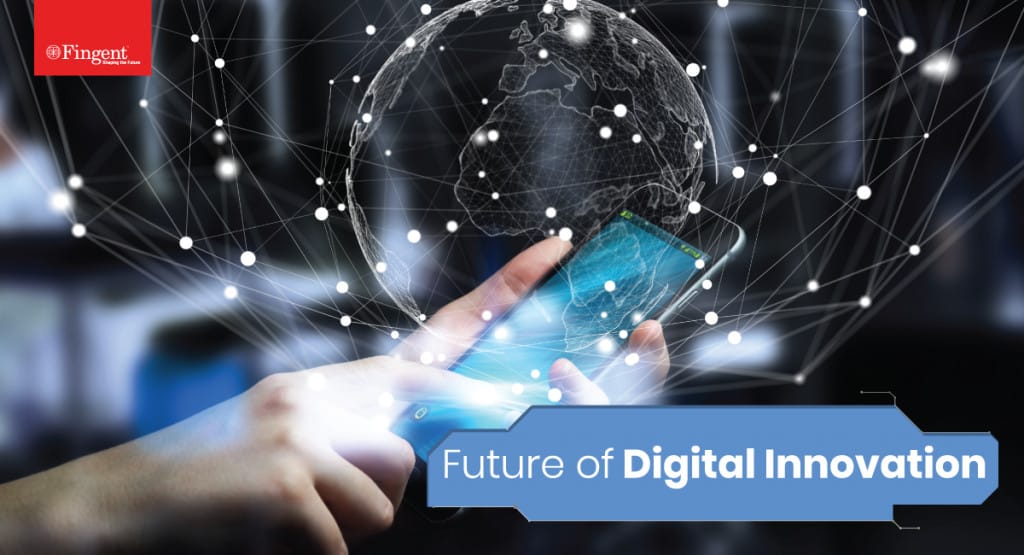Tag: Covid19
How to plan a successful COVID-exit strategy and get your business on track?
If the 2008-09 global recession was due to financial meltdown and economic vulnerabilities, the 2020 economic crisis stemmed from the global pandemic and subsequent health emergency. Both incidents hold lessons that business owners and leaders should follow to fast-track their organizations’ recovery in 2021.
Read more: 11 Practices Followed by Leaders to Build Resilience and Ensure Rapid Business Recovery
Economic growth in 2021 is likely to improve compared to the growth rate in the second half of 2020. However, it will still be uneven. Additionally, the timing and growth will vary for different products and services and geographic markets.
Given the uncertain recovery of the economy, leaders and business owners need to plan a successful strategy to lead their teams and organizations over the year. The focus should be a forecast of their companies’ revenue potentially earned in every quarter of the year.
That said, the COVID-exit strategy is not straightforward. Leaders and business owners will have to make a few difficult choices.
- How much should my organization change, and how fast?
- How far should I go to change my current strategy and adopt faster and more agile approaches?
These are some of the questions that you’ll probably need to figure out. However, remember that if your organization does not move quickly, it will lose itself in the crowd.
One of the best ways to transform is to apply the “all-in” approach to transformation. It means to go ahead with full speed. Whether your organization’s transformation should be about portfolio moves or performance improvements misses the point. If you want to succeed, you must consider both and make your transformation go big. This approach will help your organization emerge stronger and sustain the competitive edge for a long time.
This article discusses how leaders can build a successful COVID-exit strategy and begin a holistic transformation.
Three fundamental steps that organizations can consider
If your organization is successfully managing portfolio and performance moves simultaneously in a transformation, you can invest in three foundational steps:
- Getting an honest view of the business’s full potential across both portfolio and performance moves.
- Understanding the impact of those moves.
- Creating a program with a proper structure and sequence to maximize value creation.
While understanding the full business potential, leaders must know the importance of setting a high aspiration. According to McKinsey & Company, companies that put their gross transformation targets at 75% of trailing earnings are more likely to create value sustainably.
Incrementalism may be risky for organizations trying to break out from the COVID-19 crisis. Management teams seek safety to confront the current situation and avoid the discomfort of going in for the big moves. In reality, leaders must use this time and opportunity to challenge assumptions and overcome social barriers that block bold moves.
Read more: Top 5 Organizational Imperatives for Business Leaders to Become Winners in the New Normal
Successful digital transformation requires leaders to answer these questions
- Which line(s) of business does my company no longer own naturally?
- Which trends accelerated by COVID-19 could transform my business?
- What are the new efficiencies and business models developed by my company to meet the COVID-19 necessities?
- How can my organization benefit from the advantages of those new efficiencies and business models in the next normal?
- How has my organization’s health changed, and what elements and capability building will be required to maximize the impact of the COVID-exit?
While you are trying to balance portfolio and performance moves, you will also need to consider the sequencing. Portfolio and performance initiatives must go hand-in-hand. You must consider each move by defining the magnitude, timing, and risk of impact.
Read more: Fingent Speaks: What it Takes to Build a Successful Digital Transformation Strategy
According to McKinsey & Co., stand-alone portfolio moves capture less than half of value creation, especially in areas such as deal premiums, performance upside, or growing new business. However, if your strategy is ill-conceived, even stand-alone performance moves can take time and maybe outweighed by acquiring the wrong business lines.
Two cases of “all-in transformation”
While you must consider both portfolio moves and performance improvements, which of these should you execute first? The answer depends on the organization and context.
How and when you implement your transformation elements must be guided by your organization’s various circumstances and potential at any given time.
We’re listing two cases of “all-in transformation” here. Both the examples highlight the significance of sequenced transformation in unlocking business value. In both cases, the organizations identified the required potentials, set high aspirations, and deliberately sequenced the portfolio and performance moves to achieve the results. However, the companies differed in how they advanced from there.
First case:
In the first case, the value creation and its sequencing were as follows:
- The company streamlined its cost structure, focused on resource allocation, and carved out a few of its competing lines after consolidating business units and simplifying the executive team. This reorganization enabled about 10% of total transformation value creation.
- Next, the company improved the effectiveness of its sales force which generated high revenue growth. It also implemented automation and simplifications to reduce overheads and adopted a strategic procurement approach to reduce external expenditure. These operational improvements enabled about 75% of transformation value creation.
- Lastly, the company invested in optimizing firms it had acquired and integrated a similar set of core capabilities.
Second case:
The second case, though an all-in transformation program, took a separate route.
- After a significant merger, the company re-evaluated its core business portfolio and divested non-core business. This approach enabled the organization to focus on financial flexibility by using the proceeds to buy back stock. Overall, this performance move allowed the company about 75% of value creation.
- By streamlining its operations, focusing on revenue growth and margin improvements, the company’s performance transformation enabled about 25% of value creation.
Read more: 7 Ways for Your Business to Overcome the COVID-19 Aftermath
From these examples, leaders need to understand that they cannot choose between a portfolio-first or performance-first approach while planning their exit strategy. The order is not important, but leaders will have to accept that they are going all in, set high aspirations right from the start, and let the realization of full potential determine what happens. Avoiding an ad hoc approach to value creation may have significant implications over the long-term. Research reveals that organizations that go for the “all-in” transformation approach are more likely to show lasting improvements and are nearly three times more likely to be ahead of their competitors.
The takeaway
After a year of uncertainties, CEOs and business leaders are aware that the COVID-exit path will not be easy. However, if companies adopt an all-in transformation approach, they can expect more dynamism and flexibility during the journey.
Read more: 10 Services Offered by Fingent to Prepare Your Business for the Future of Digital Innovation
At top software development company Fingent, we use cutting-edge digital solutions and rapid innovation to help businesses reinvent the future. We’re closely monitoring the situation and helping businesses return to work with our technology consulting and innovation capabilities. Feel free to get in touch with us to know how we can transform your business digitally.
Stay up to date on what's new

Featured Blogs
Stay up to date on
what's new



Talk To Our Experts
How can companies step up their game and deliver the COVID-19 vaccine efficiently?
The COVID-19 vaccines have received Emergency Use Authorization in the United Kingdom, the United States, Canada, the EU, and a few other countries. Many frontline workers and even the priority population have already received their first doses. Vaccines from several major global manufacturers like India are also set to arrive and be distributed for administration globally.
However, in certain places, the vaccine effort has hit a few roadblocks. Deployment to vulnerable countries and the at-risk group is also slow. As the COVID-19 vaccine is being made available, supplying the doses efficiently with utmost care will be the ultimate logistics challenge. Massive volumes have to be handled, stored through cold chains, and distributed. All processes need to comply with safety regulations. In other words, the vaccines should be distributed quickly and safely worldwide.
In the United States, several organizations play a crucial role in vaccine deployment by adapting their operations to meet the demands. Suppliers, manufacturers, and regulators are stepping up the production of vaccines. Additionally, several thousands of medical, pharmacy staff, frontline workers, and vaccine handlers attend training sessions to understand the peculiarities of different manufacturers’ specific vaccines.
Here, we have discussed seven steps that organizations must engage in to ensure the safe delivery of the COVID-19 vaccine. Following these steps can boost the productivity of your logistics business and efficiency on your future orders and deliveries.
Read more: 6 Tips for Logistics and Supply Chain Leaders to Plan COVID-19 Vaccine Distribution Strategies
1. Ensure raw-materials supplies
Vaccine producers can partner with global suppliers of raw materials and provide support to create redundancies wherever needed in the supply chain. Last year, many manufacturers established new partnerships. However, a wide diversity of suppliers is necessary to meet the demands of each vaccine seeking approval. Manufacturers can negotiate contracts and offer incentives to suppliers who invest in boosting production and stocking-up the goods. Also, producers can evaluate their inventory management and check for stock-outs of essential raw materials.
2. Collaborate with the government
In addition to the above point, the producers must have sufficient interaction with the government to increase production and maintain it. Many manufacturers and suppliers are working closely with the government to manage natural resource allocation. This collaboration must be continued over the economic and public health implications of outsourcing legacy products and optimize production lines for COVID-19 vaccines. Additionally, producers can collaborate with the government to create technology-transfer timelines and develop innovative ways to push bulk volumes to the market. It also helps improve inventory management and distribution.
3. Boost manufacturing by adhering to quality guidelines
As producers need to ramp-up operations in new or existing manufacturing facilities, they could look for opportunities to accelerate the process. Companies can use several digital and analytics tools to expand capacity and scale faster. Additionally, they can accelerate technology transfer time. For example, companies grow and speed up production by conducting engineering runs, validation runs, and stability studies simultaneously.
By collaborating with regulators and manufacturers, authorities can ensure that they meet the established and newly issued guidelines related to the dosage quality and procedures. With such coordination and understanding, higher throughput can be achieved. Similarly, stakeholders can collaborate and employ novel technology platforms such as mRNA to establish new vaccine production standards. Creating best practices at the facilities and the production can help set a clear road map for new manufacturing facilities. Eventually, this can improve future production capacity and throughput while meeting all the quality standards.
4. Optimize cold chain logistics
To mitigate distribution risks, manufacturers and distributors must identify failure points and create redundancies at each stage. For instance, dry ice can be used in warehouses fitted with freezers to deal with power loss or machine malfunctions. So, sources of dry ice must be identified across the distribution routes to restock coolers as required.
Reporting systems can be set up to identify supply-chain disruption events whenever they occur, using the data for refining best practices and procedures to avoid more losses.
In case there is a drop in the vaccine demand to the point that they are not immediately consumed, vaccine inventories must be redistributed to locations with higher demand. Manufacturers and distributors must avoid too much stockpiling to maintain the cold chain and reduce risks to the receiving administration location. If this is not possible in some areas, long-term storage by replenishing dry ice or increasing freezer capacity can be considered.
5. Address labor shortage
Currently, many locations are relying on hospitals and primary-care sites alongside retail pharmacies for vaccine administration. However, as vaccines will be deployed to the general public, more vaccine administrators will be needed. So, deploying the vaccines to larger and streamlined sites will be more efficient. This will improve patient safety, utilization of labor, and speed of vaccination.
Read more: How SAP Helps Realize Voice-enabled Warehouse Operations
6. Reduce spoilage at “care-points”
Manufacturers, distributors, and companies can collaborate to create ways to identify and track instances of spoilage. They can achieve this with proper guidance, training, certification, and optimization of doses.
As vaccines will be deployed to broader populations, accelerating the first-dose allocation as scheduled will be of paramount importance.
A possible way to prevent second doses from spoiling is to ask the vaccine recipient to commit to a second dose appointment at their point of care before administering the first dose.
7. Plan to overcome IT challenges
COVID-19 stakeholders must identify IT systems and assess their ability to perform at scale. They must also agree upon standard requirements and processes to generate and share threat intelligence. Awareness of attacks on the vaccines will lower the chances of seizures in number and magnitude.
Additionally, manufacturers and distributors can commission systems to track if the vaccine recipient has demonstrated immunity. This will not only build confidence in immunity but help people have a recognizable and accepted way of certifying that they have been vaccinated. This is true, especially if it will release them from travel limits and other pandemic-related restrictions.
Read more: How to Pick the Right Logistics Management Software
The organizations involved in the deployment of vaccines are not solely responsible for managing it across the common operating model. The risks can be reduced to a great extent with increased cooperation from stakeholders. So, working groups could get together to identify the risks, assess their impact, and determine if certain risks are evolving and how they can be addressed.
Building smart and custom logistics software applications can help fulfill the increasing demand for last-mile delivery. Fingent top custom software development company will help build healthy tech partnership ecosystems to ensure uninterrupted supply and distribution of your products and services. It is the right opportunity to look at the future of logistics and decide whether to continue on the pre-COVID trajectory or change course. To see how our custom logistics software solutions can improve your team’s productivity, get in touch with us.
Stay up to date on what's new

Featured Blogs
Stay up to date on
what's new



Talk To Our Experts
How successful leaders are responding to COVID-19 business implications
As the world is wrestling with the unforeseeable implications of the coronavirus pandemic, our social and economic fabric is under severe stress. For most businesses, COVID-19 is unlike any crisis that they might have faced in the past. The urgency to respond has forced every business to rethink how they operate if they are to obtain any chance in navigating these new challenges. Times like these need leaders who must act quickly to minimize the risk to their employees and business operations while looking forward to creating a promising future. Beyond the crisis, they must ensure that their organization has invested in the right capabilities to adapt to the “new normal.”
Read more: Navigate Business Impact Of COVID-19 With These Hot Technologies
A resilient leader is a person who sees the most challenging crisis as a hurdle that you can hop over, not as an impregnable wall. That has been a hallmark of successful leaders. It is a remarkable ability that will help their companies recover quickly from a crisis and transform it into an opportunity to grow their business. Resilience is a learned ability, and it must be acquired, built, and developed by all business leaders.
This article will present a detailed guide on leadership practices that will help business leaders respond effectively to the present crisis.
1. Do not narrow your focus
When faced with severe stress, the human mind tends to narrow its focus. Perhaps it is a survival mechanism, but it restricts your field of vision to the immediate foreground. Leaders must intentionally pull back to take a broad and holistic view of both the challenges and opportunities. Remember a bend in the road is not always the end of the road. Well-focused focused leadership fosters well-directed management.
2. Do not panic
People do not follow leaders. They follow models of behavior. They look to their leaders for courage and strength when faced with challenging situations. Remember, your fear is contagious. Even if you do not say it out loud, people can understand and sense your fear. You cannot expect people to pivot if the leader is not positive. Aim to stir up energy in others, not fear. Empower your people with courage so that they can help in business recovery.
3. Turn the crisis into a stepping stone not a tombstone
Do not allow the present crisis to paralyze you. Resilient leaders get ahead of challenging situations when they welcome inputs from others, admit their own mistakes, and stay open to suggestions. They take steps to adapt courageously. Resilient leaders must be willing to take risks confidently and experiment new ideas. It is easy to be stuck in the same routine until situations like this pandemic require organizations to change or die. Leaders who are not afraid to make bold decisions are the need of the hour.
Perhaps you must put a hold on large initiatives and expenses. Just do it. Do not depend on your past strategy. Those strategies may not be relevant now. Assess the ground situation often. Extend your antennae across the entire operative ecosystem. The best way to accomplish this is to create a network of local leaders and influencers. They can assist you by giving you updated information about the sentiments of employees, suppliers, customers, and other stakeholders.
Read more: 7 Ways for Your Business to Overcome the COVID-19 Aftermath
4. Do not fixate on what is closed
Managing a crisis like COVID-19 can be thrilling for some leaders. However, that can be a trap where you might feel the urge to micro-manage the present. Resist the temptation to take over. Instead, use your experience to provide necessary guidance and support. A leader fixated on micro-managing will disrupt the rhythm of employees. Though managing the present is important, fixating only on one aspect hampers the growth of your business. It is like being bent on opening a closed-door when your house is on fire instead of running out via any other open door or window. Similarly, instead of micro-managing, a leader must take advantage of other employees by delegating responsibilities and trusting people while making tough decisions.
Such trust starts with transparency: a willingness to admit your ignorance, and the track record you have built over years. Building such trust helps you develop positive relationships with your employees and customers. The fact is, a leader may be willing to make a dramatic change, but they aren’t going to make much headway without positive relationships to support that change.
5. Rest, refuel and recover to rediscover the new win
One common mistake most leaders make is determining what to do without considering all the facts. The only thing that is certain about today’s crisis is uncertainty. All the facts may not be available or clear within the expected time frame. However, leaders must refrain from depending on their intuition or previous experience to make decisions. Resilient leaders better cope with uncertainty by continually collecting information and observing how well their response is working.
Read More: Fingent’s Response to COVID-19 Business Implications
Think of it as a long drive where a vehicle needs rest, refueling, and recovery before it continues onwards. In practice, it means that leaders must pause from time to time, assess the situation from multiple vantage points, and anticipate the possible outcome before they act. This prevents leaders from overreacting to new information as it comes in. True, there might be times when leaders will have to act quickly and decisively. However, leaders must take time to stop, assess, and anticipate before making further moves.
Two behaviors that help leaders in this regard are updating and doubting. Updating involves considering the fresh perspective of the team. Doubting involves critically considering if their decisions require modifications, adaptations, or the possibility of discarding. This will help leaders develop new workable solutions.
6. Avoid over-centralization
Situations like this pandemic increase risk, ambiguity, and uncertainty. This may scare leaders into becoming controlling and overbearing. They might create new layers of approval even for minor decisions. This might result in everyone involved becoming less responsive and frustrated with each new constraint. Instead, organize and determine which decision you will make and which you can delegate. Have clear guiding principles and guidelines.
7. Anticipate and welcome structural changes
The current pandemic has accelerated structural changes at a quicker pace. For example, the possibility of remote work was slowly evolving before this. Today though, worldwide, most businesses have learned and understood the increased efficiency of communicating and coordinating over the virtual platform. Keep pace with the changes.
Case study: How Fingent created an inspiring and collaborative digital workplace for Sony Mobiles? Click here to download
8. Do not disregard the human element
The present crisis is so intense because it is affecting people. A leader may forget that the coordinated efforts of their people go into the daily metrics of share price, revenue, and cost. Create an environment where people are collectively motivated to contribute to their shared success.
A crisis such as COVID-19 forces people to think of their own survival first. They might be bombarded with many anxieties concerning themselves, their work, and their families. A resilient leader will ensure a hands-on approach to this instead of assigning such as communications to legal staff. One of the most vital aspects of a leader’s role is to make a positive difference in people’s lives. Leaders must pay careful attention to the struggles people are facing and take measures to support them.
9. Communicate effectively and powerfully
Communication during a crisis is either overdone or underdone. George Bernard Shaw once said, “the single biggest problem in communication is the illusion that it has taken place.” An overconfident talk may raise suspicions about what a leader knows and how well they are handling the crisis. Distance working can create communication barriers as well and a team will look to their leaders for emotional reassurance and practical direction. This makes it important that leaders communicate frequently and thoughtfully. This will assure stakeholders that they are coping well with the crisis. Ensure to make your why’s clearly known to all involved. Let others know about what you are trying to do. Keep communication open and transparent. Communication also means that leaders listen and pay attention to differing opinions. They allow other team members to express their views firsthand.
10. Keep up the routine
Whatever happens, good leaders ensure that their teams are always active, working, thinking, learning, socializing, and innovating. Even if it is virtual, their teams are on the move. When working at a physical location, work involves chatting, socializing, laughing, and making friends. Leaders do well to find ways to do these things even remotely.
11. Welcome feedback
The most resilient leaders are concerned not only about their personal development but are more interested in the development of others. They recognize that everyone can contribute better if they learn from their strengths and weaknesses. Sharing constructive criticism plays a major part in this as well. The leader who welcomes feedback, negative or positive, is most likely to coach others well.
Leaders, you are models
Across the world, COVID-19 is testing business leaders in every aspect of their role. The consequences of the present pandemic could last for a long time. It could present greater difficulties than anyone could ever anticipate. Resilient leaders focus their attention on leading beyond the crisis toward a more promising future as they manage the present well. The prolonged uncertainty and ambiguity are added reasons for leaders to embrace the best practices discussed in this post. The best leaders establish and reinforce behaviors that can support their organization during this crisis and after.
Read more: Business Process Re-engineering: Facing Crisis with Confidence
Contact us to know more about how Fingent’s leadership supports customers to ensure business continuity and enables employees to engage effectively during the current pandemic.
Stay up to date on what's new

Featured Blogs
Stay up to date on
what's new



Talk To Our Experts
5G and the World of Work – An Overview
- COVID-19 to act as a Catalyst
- Remote Work: Story so far & Roadblocks
- 5G to the Rescue
- Impact on Video Conferences
- Impact on AR and VR
- Improved VR Training with 5G
- Improved AR Training with 5G
- Other ways in which day-to-day work will be different with 5G
- Real-world example
- Security and other concerns for 5G
COVID-19 to act as a Catalyst
Did you realize? The working world is evolving, forcing organizations to think and act differently. Nothing happens without a trigger. In most cases, these triggers are trends.
What are these trends? Globalization, Mobility, Changing Demographics, and Technology are a few to mention.
If we focus on Technology alone; Big Data, Collaboration Tools, Wearable Devices, IoT, Cloud Computing, and 5G are some of the recent trends. This blog will take you through how 5G is enabling organizations to Reimagine and Rethink the way they work and how 5G is solving a lot of tech headaches.
It was already predicted that an economic recession will spur investments in technology. The owners and CEOs will need to find alternate ways to increase efficiency, drive revenue, and meet customer needs. Remote work is one such measure companies are adopting to make it work. As firms worldwide embrace remote work in the wake of COVID-19, we expect remote working culture to be the next trend.
Remote Work: Story so far & Roadblocks
In fact, remote work culture was one of the most defining tech trends of the past decade. The report by GetApp found that remote work expanded by nearly 400%. Quoting the report “The rise of remote work during the last decade has been driven by the proliferation of powerful mobile devices, ultra-fast internet connections, and the pervasiveness of cloud-based storage and SaaS solutions.”
With all the above-said factors which enhanced the adoption and acceptance of remote work culture, companies also faced a lot of tech headaches in implementing it properly. The shoddy WiFi network will lead to the slowdown of internet speed, digital distractions, inefficient communication, poor video calls, heavy buffering, etc. Besides, in-person sociability or daily face to face interaction is a major factor that boosts employee productivity.
5G to the Rescue
To accelerate business capabilities, 5G is addressing the fundamental needs such as:
- Connecting more devices faster than it is now
- Reduce the lag time between devices
- Enabling the bulk volume of data transmission from a large number of devices with better responsiveness
- Higher bandwidth & lower latency
The above concerns can be addressed once 5G is implemented. Thus, 5G is going to reinvent the way people are working from home and the above factors enable 5G to host new business applications.
The current internet revolution makes it possible to work remotely without many disruptions, but 5G will enable VIRTUAL WORKING.
Let us look at the changes it will bring to different work functions:
5G will augment changes in remote work, virtual meetings, hiring, training, or other work functions.
According to the Consumer Technology Association, once complete, 5G will be 100 times faster and 5 times more responsive than today’s networks. Download speed of 20 gigabits-per-second means 5G will enable more specialized tasks at the workplace like:
- Hold remote meetings in virtual spaces, remote trouble shootings, remote business meetings, thus saving the operational cost
- Interactive digital whiteboards – 5G enables transmitting a lot of data in a very fast and responsive way and thus digital displays will be able to interact with mobile devices, applications, and cameras.
- Virtual and augmented reality – With 5G, it will provide more immersive & interactive content experience, to make it as fully-realized collaborative technology.
- 5G will enhance highly data-intensive services Multiperson video conferencing.
- 5G will empower IoT by allowing real-time collaboration between employees and things
- Real-time cloud processing will be easier with 5G as the speed and processing capabilities increase. It will boost productivity. How 5G Will Boost Enterprise Investment In Cloud
Read more: How 5G Will Boost Enterprise Investment In Cloud
Impact on Video Conferences
It seems that the combination of 5G and increased remote work will lead to more video conferences. This may be a piece of welcome news to people who have suffered through meetings, whether it was due to video freezing up, or forgetting to put the mute button on before making an awkward comment. 5G is all set to eliminate these deficiencies. Let’s see how:
- Speed: As mentioned above, 5G will be 100 times faster and five times more responsive than today’s networks. The increase in speed can improve streaming speed, download speed, video calls, and conferences with much more ease. More devices can work much more quickly and simultaneously with 5G.
- Bandwidth: The increased bandwidth, which is approximately allowing for 1,000 devices per meter on a connection will boost the network speed and fewer dropped connections. 5G bandwidths are projected to be 10 times higher than 4G LTE.
- Video Quality: Better speed and bandwidth can facilitate calls in HD and 3D without lag, latency and other interruptions
- Mobility: Mobility is one of the underrated advantages of 5G, one can easily connect with their partners, stakeholders, and colleagues via video, anytime, and anywhere. This is possible because 5G relies on higher frequency radio bands. The frequency of 5G ranges from 30GHz to 300GHz while 4G operates at 6GHz. It is a massive improvement.
Impact on AR and VR
5G can improve virtual meetings with the help of Virtual Reality and Augmented Reality. With 5G remote meetings could be held in virtual spaces. What would this look like? Each participant could be at home but feel like they are sitting around a table with the other participants, thus making use of VR technology. Also, new capabilities like digital whiteboards would also be available.
AR augments elements and other things in the real-world environment, whereas the task of VR is to immerse users fully in a virtual environment. The objective here is to manipulate and trick the minds of employees to feel and enjoy the immersive experiences. Although VR & AR is in use now with 4G, it hasn’t attained it’s full potential yet. AR and VR solely rely on network connectivity. Any disturbance in the connectivity will result in an unsatisfactory and unpleasant customer experience. By offering rich levels of computing power, 5G can take it to the next level.
For example, the NBA has tried weekly broadcasts in virtual reality (VR). It was providing viewers with a chance to see the action from the best seats anywhere in the house. However, due to blurred pictures being reported, the VR broadcast was turned down. But with 5G this problem can be solved.
Improved VR Training with 5G
The limitation of 4G when it comes to the application in VR is already proven. With 5G and it’s better bandwidth and speed, VR training will be much smoother and effective. 5G will help unlock the full potential of VR by causing a 10X decrease in latency. In VR, users will lose interest when the latency is over 20 ms. 5G guarantees a latency of sub-5 or sub-2 ms latency, which will provide an amazing user experience. As VR is all about immersion – feeling like you are in the virtual environment – this is incredibly important. For VR head-mounted displays (HMDS), currently, it requires a powerful PC to run them, which limits the application and enjoyment of VR to a certain location. Implementing 5G will push the power consumption, storage, and processing power away from the PC and will push into the edge cloud.
Read more: Virtual Reality: The Revolutionary Force
Improved AR Training with 5G
AR is highly data-intensive – even a minute of AR will consume 33 times more traffic than one minute of a 480p video, so you can see the impact 5G is going to have on AR. One peculiar thing about AR is that it expands on human potential, allowing people and machines to function better together in a collaboration that what they both could do alone. AR superimposes digital information, enhancing the real world we see, offers additional information that improves the comprehension.
Imagine the conceptualized design of a product you are going to build printed in a piece of paper, and imagine you are seeing that product right in front of you, appreciating all the specifics, and realizing what it would look like in real life, this is the difference between AR training and traditional training. AR aids point-of-need visual learning in real-time. AR training organizations can enhance the experience of training around the existing data and information.
Organizations can train their employees and partners more effectively using AR. AR provides a highly visual and interactive format that is far better than normal text and video approaches. For example, imagine a SAAS platform or an Office Collaboration Software that enables employees to scan the product and receive direct training in a highly immersive experience. This will further increase productivity, reduce the time, and provide better flexibility.
Read more: How Top Brands Embrace Augmented Reality for Immersive Customer Experiences
Other ways in which day-to-day work will differ with 5G
Remote work was made feasible by high-speed broadband internet, video conferencing, and other technologies, thanks to the increase in communication speed. Now, the next challenge is simulating the collaboration and co-worker interactions of the traditional workplace. That’s where holographic calls come into the picture. It is possible through remote meetings that could be held in virtual spaces with the help of 5G. The holographic calls show us a 3D projection with the help of 5G. This is one such example of how day-to-day work will be different from 5G.
A holographic call allows companies to organize meetings in a shared holographic workspace. Participants can share the content, both 3D and 2D within this workspace. It will be visible to all other colleagues or clients attending the meeting.
It is also possible for anyone to interact with each other differently, like in the real world. Suppose, If a person decides to roam around the workspace, which is shared, their avatar, the disembodied version of their head and shoulders will move as well. Such movements are visible to everyone except the same person.
For digital whiteboards, 5G can further enhance connecting a large number of IoT devices from movement sensors to smart printers to usher the workspace environment to go digital.
Real-world example
Volvo Car is using HoloLens to demonstrate the extensive safety features of their cars to clients. The technology helps educate clients, close sales, and ultimately places the emphasis on safety, the key element of Volvo’s brand.
Read More: 5G Network Vehicle Safety and Security
Security and other concerns for 5G
Even though 5G offers huge potential for businesses around the world, it seems the technology is much more complex when it comes to security concerns.
- 5G will enhance location tracking and personal data collection. Since 5G signals are short-range, it requires more cell towers covering a much smaller area. It means they know your exact location which is a piece of sensitive information.
- As per a research study by Purdue University & the University of Iowa, 5G inherits many security policies and subprotocols from its predecessors, which are more error-prone and thus raise privacy and other security concerns.
To summarize, 5G is enabling us to work in new ways while keeping us more engaged and enhancing productivity. The role of technology is shifting from being a luxury to a necessity by acting as a central nervous system for the organization, and 5G is one among them. Thus, the world of work is changing rapidly and the organizations have to adapt. Is your organization ready for the 5G revolution? Get in touch with our custom software development experts experts today and know how your company can embrace the benefits of 5G.
Stay up to date on what's new

Featured Blogs
Stay up to date on
what's new




























































